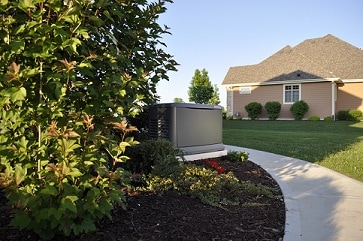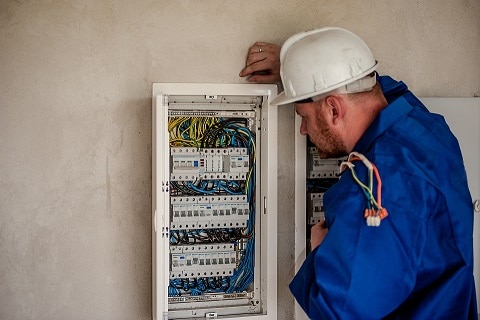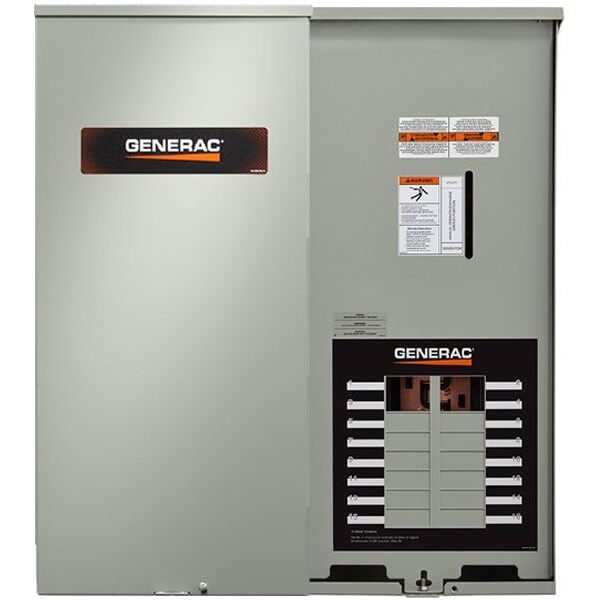
Automatic Transfer Switch Buyer's Guide
How To Pick the Perfect Automatic Transfer Switch
I recently spoke with someone who wanted to back up their home with a standby generator for automatic power.

Halfway through our conversation, they asked me if the standby works by plugging it into an outlet on the side of a house. Not at all.
You need an automatic transfer switch to run a standby generator. A manual transfer switch that you use for your portable generator will not work, and that's probably what the person had in mind.
During a blackout, an automatic transfer switch will automatically command your generator to start and backup your house, as if nothing happened. Below, we'll review the basics of automatic transfer switches so you can enjoy simple, on-demand backup power.
How Does an Automatic Transfer Switch Work?

Automatic transfer switches act as the "brain" of your entire electrical system. Once installed, they can automatically switch between electricity coming from your utility and generator power.
When the transfer switch detects a power outage, it switches your home to generator power. Afterward, it detects when the power is restored and switches your home back to utility power.
What Kind of Automatic Transfer Switch Do I Need?
There are different types of automatic transfer switches ranging from 50-400 amps that vary based on what you need to power.
Power the Basics

These switches require your electrician to wire the individual circuits from your panel, so labor costs are higher than with other options. However, you won’t be powering items you don’t need, and it’s the perfect option if you have an older home with 100-amp service or lower.
Keep in mind, you won’t be able to power appliances connected to a circuit that’s not backed up, so you will have to decide what’s most important at the time of installation.
Power Everything
Although they cost more upfront, there is no wiring of single circuits with service disconnect switches, so installation is far less labor-intensive than with other options. Go with a service disconnect switch for easy, worry-free power that will make you forget you were ever on utility service.
Power a Subpanel
Standard automatic transfer switches are designed to power subpanels. They are not very common and may not even meet codes in all areas. If you are one of the few with a subpanel who could benefit from a standard transfer switch, be sure to discuss it with your electrician first.
Split Service Power
In some instances, you will need to power two main breaker panels. For example, suppose you have 400-amp service with two 200-amp breaker panels. You will need to use two 200-amp service disconnect switches. Both will be installed between the electric meter and their respective breaker panel.
Sizing Your Automatic Transfer Switch
For service disconnect switches, the amperage must match that of the main breaker in your electrical panel, (it's usually located at the very top of the box.) So, if you have a 200-amp main breaker, you'll need a 200 amp automatic transfer switch.
Load center transfer switches don't have to be sized for your entire panel because they only power certain circuits. Instead, the required amperage will vary depending on how much you want to power.
Power Management
Today that is not a problem because most automatic transfer switches come with power management capability.
- A/C shedding, like its name implies, turns off or "sheds" your air conditioner load if the transfer system detects the generator can't keep up with demand.
- Power management modules can manage and prioritize multiple electric loads, turning them off and on depending on available generator power.
Don't Forget
An automatic transfer switch is essential if you're buying a home standby generator. To install your generator, you need to buy both at the same time.
In many cases, transfer switches come packaged with select standby generators, but not always. Ultimately, you need to make sure your switch is large enough to meet your power needs. That's why we're here.
If you have questions or need help, contact us at 1 (800) 800-3317 to speak with a transfer switch expert.
Transfer Switch Buyer's Guide Navigation
Main | Manual Transfer Switches | Automatic Transfer Switches | Power Cords | Power Inlet Box
